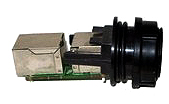There is no doubt that in the very near future there will be a need for 4G cell phone signal boosters. Currently, major players are fighting for dominance in the 4G arena: Verizon, AT&T and MetroPCS utilize LTE (700 MHz), partners Sprint and Clearwire utilize WiMAX (2.5GHz) and T-Mobile uses HSPA+ (1700MHz). Verizon recently embarked on a three-year project to roll out LTE nationwide. By 2013, Verizon hopes to make LTE available to roughly 285 million Americans. According to projections from the WiMAX Forum, WiMAX coverage is expected to touch the one billion mark globally by the end of 2011. T-Mobile's 4G service is already available in over 135 U.S. cities.
With 4G coverage looming across the United States, it is important to clearly understand the role of 4G in your personal cell phone usage. Currently, 4G services are being utilized for data services rather than voice. Therefore if you are not a smartphone user or are just looking to improve voice quality on your cell phone, you probably won't need a 4G Cellular Repeater any time soon. Furthermore, in order to take advantage of 4G at all, you'll need a 4G phone. Currently, the selection of 4G cell phones is limited to just a few per carrier. Finally, you will have to check with your preferred carrier to confirm 4G coverage in your area.
Currently there is only one 4G cell booster on the market: the Wilson AWS Cell Phone Signal Booster. Slated for official release in Q2 of 2011, this amplifier boosts signal on T-Mobile's 1700MHz band. With a 60 dB gain, the Wilson 4G AWS Cell Booster is being introduced to the market at $399.95.
Individuals in rural areas who are already experiencing spotty 3G coverage are unlikely to experience 4G service in the next couple of years. However, as 4G coverage continues to expand, the demand for LTE and WiMAX cellular repeaters will no doubt increase and consumers will soon begin to see 4G cell boosters entering the market. Until then, learn more about boosting your cell phone signal with the latest 3G cellular repeaters. The author resource box below provides further information on dual band cellular repeaters.
















